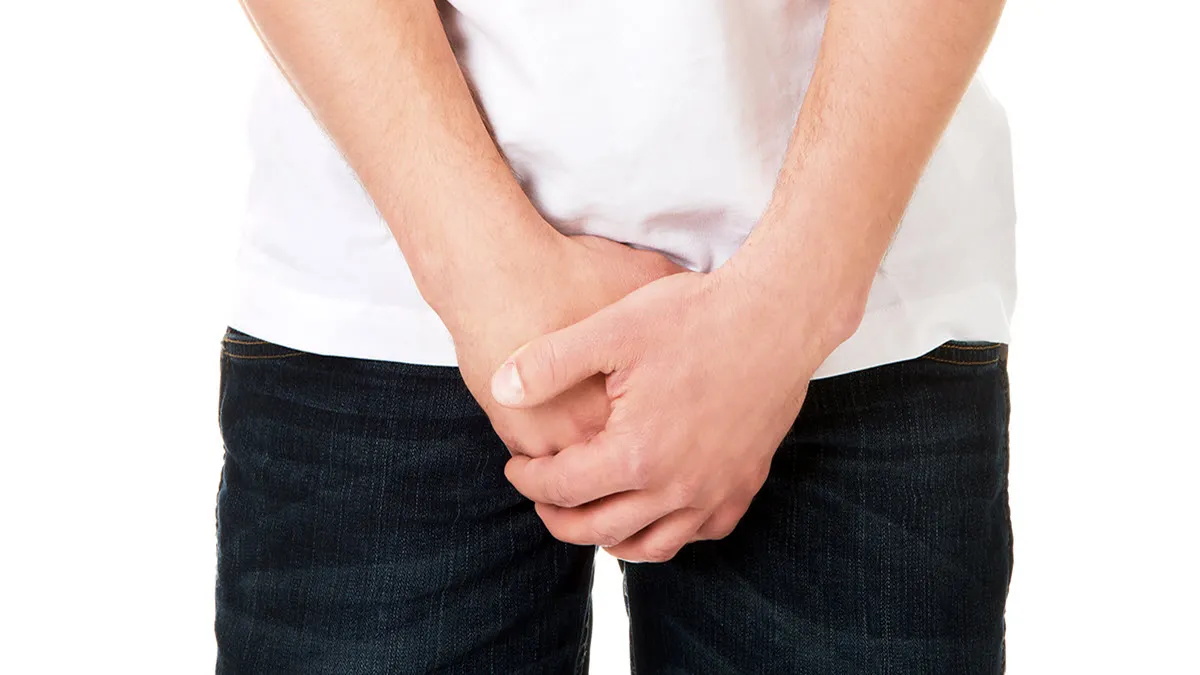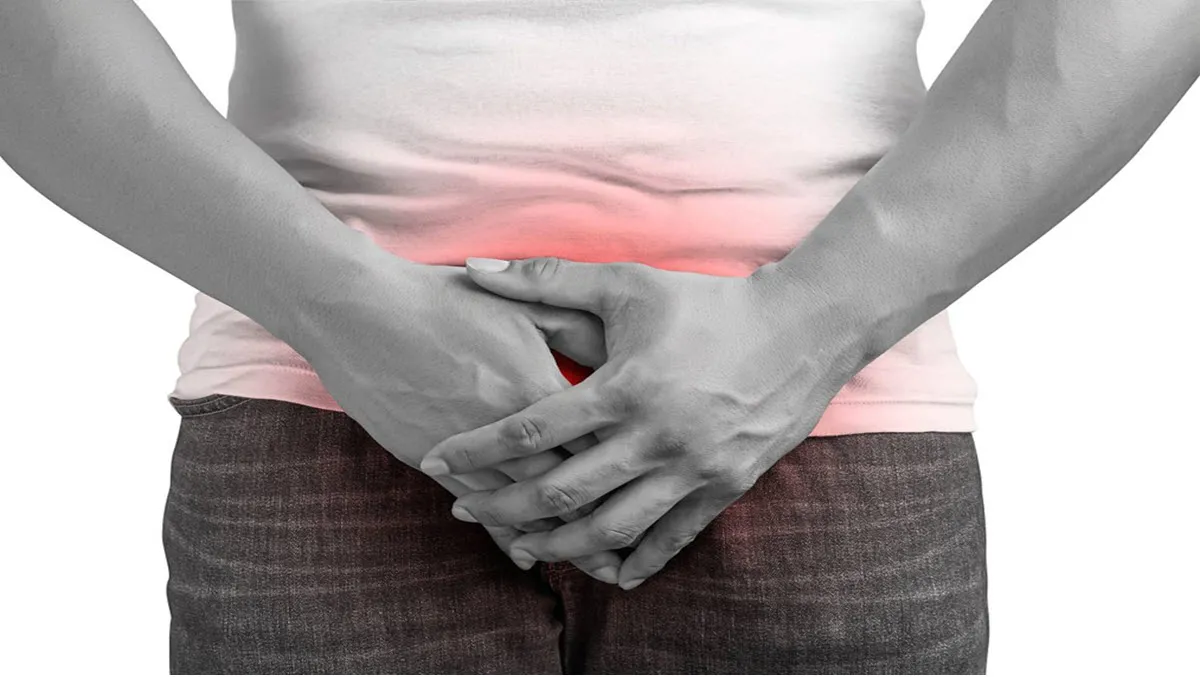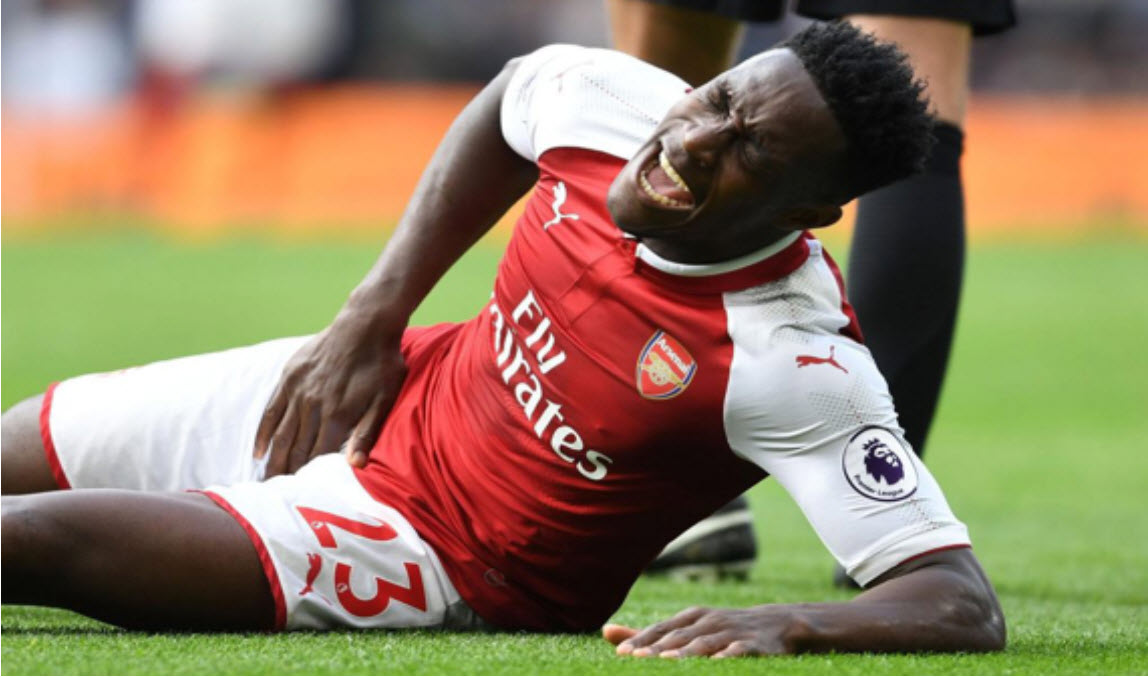Introduction
Ilioinguinal neuralgia is a painful condition resulting from irritation or compression of the ilioinguinal nerve. This nerve, part of the lumbar plexus, is essential for the proper functioning of the inguinal region and the lower part of the abdomen. When the ilioinguinal nerve is subjected to excessive pressure or irritation, it can lead to painful symptoms that can significantly affect the patient’s quality of life.
The most common symptoms of ilioinguinal neuralgia include shooting, burning, or tingling pain in the inguinal area. This pain can also radiate down the pubis in men, sometimes reaching the scrotum, or towards the labia majora in women. Some patients may experience tenderness or numbness in the affected area. The pain may be constant or occur intermittently, often exacerbated by specific movements such as hip flexion.
The causes of ilioinguinal neuralgia are varied. One of the common causes is compression of the ilioinguinal nerve due to an inguinal hernia. When part of the intestine or fatty tissue enters the inguinal canal, it can put pressure on the nerve, triggering the pain. Surgical procedures in the inguinal region, such as those related to hernia correction, can also lead to irritation of the ilioinguinal nerve. Trauma, infections, or other neurological disorders can also contribute to the development of this condition.
Diagnosis of ilioinguinal neuralgia is often based on analysis of the patient’s medical history, reported symptoms, and a thorough physical examination. Imaging tests such as ultrasound or MRI may sometimes be necessary to confirm the diagnosis and rule out other possible causes of the pain.
Treatment for ilioinguinal neuralgia aims to relieve pain and treat the underlying cause. Non-invasive approaches include rest, ice application, physical therapy, and the use of analgesic or anti-inflammatory medications. In some cases, local nerve block injections may be given to reduce pain.
If conservative treatments do not provide satisfactory results, a surgical option may be considered. This may involve surgically freeing the ilioinguinal nerve from any compression or irritation. However, surgery is often reserved for severe cases and does not always guarantee complete resolution of symptoms.
In conclusion, ilioinguinal neuralgia is a painful condition resulting from irritation or compression of the ilioinguinal nerve. Although generally manageable with conservative treatments, a thorough medical evaluation is essential to determine the best treatment approach based on the underlying cause of the pain.
Causes
The causes of ilioinguinal neuralgia can be diverse and varied. This painful condition usually results from irritation or compression of the ilioinguinal nerve, which is part of the lumbar plexus. Here are some of the common causes of ilioinguinal neuralgia:
- Inguinal Hernia: An inguinal hernia is one of the most common causes of ilioinguinal neuralgia. When part of the intestine or fatty tissue enters the inguinal canal, it can put pressure on the ilioinguinal nerve, triggering the pain.
- Surgical Procedures: Surgical procedures in the inguinal region, particularly those related to the correction of a hernia, can result in irritation of the ilioinguinal nerve. Manipulating tissue during surgery can sometimes cause nerve damage.
- Trauma: Trauma such as injuries to the inguinal region can cause irritation or compression of the ilioinguinal nerve, thereby leading to neuralgia.
- Infections: Infections in the inguinal region can also affect the ilioinguinal nerve, causing inflammation and associated pain.
- Neurological Conditions: Certain neurological diseases, such as diabetic neuropathy, can affect peripheral nerves, including the ilioinguinal nerve, and contribute to the development of neuralgia.
- Nerve Compression: Apart from hernias, other factors such as the presence of tumors or cysts can put pressure on the ilioinguinal nerve, leading to painful symptoms.
- Alcock’s Canal Syndrome: This syndrome, also called pudendal neuropathy, can sometimes be associated with symptoms similar to those of ilioinguinal neuralgia. It involves compression of the pudendal nerve, which also arises from the lumbar plexus.
Symptoms
- Pain: Pain is the predominant symptom of ilioinguinal neuralgia. It is often described as a shooting, burning, or tingling pain in the inguinal area. This pain can also radiate down the pubis in men, sometimes reaching the scrotum, or towards the labia majora in women.
- Increased sensitivity: Some individuals may experience increased sensitivity in the affected area. This means that mild stimuli, such as direct contact or pressure, can trigger or intensify pain.
- Numbness or Tingling: Sensations of numbness or tingling may be felt along the path of the ilioinguinal nerve. This may contribute to decreased sensitivity or a feeling of “goosebumps” in the affected area.
- Worsened by Movement: Certain specific movements, such as flexion of the hip, can make the pain worse. Daily activities involving these movements can therefore become uncomfortable for people with ilioinguinal neuralgia.
- Pain During Urination or Sexual Intercourse: In some people, pain may intensify during urination or sexual intercourse, due to the involvement of the ilioinguinal nerve in this region.
- Symptoms Associated with the Underlying Cause: If ilioinguinal neuralgia is caused by an inguinal hernia or other conditions, symptoms related to these underlying causes may also be present.
Pathophysiology
The pathophysiology of ilioinguinal neuralgia primarily involves irritation or compression of the ilioinguinal nerve, which is part of the lumbar plexus. Understanding the underlying mechanisms helps explain the symptoms and causes associated with this painful condition.
- Nervous Origin: The ilioinguinal nerve originates from nerve roots originating from the L1 lumbar segments of the lumbar plexus. It passes through the inguinal region and innervates the skin of the lower abdomen, pubis and upper thigh, as well as the external genitalia.
- Compression or Irritation: Ilioinguinal neuralgia occurs when the ilioinguinal nerve is subjected to excessive pressure, compression or irritation. A common cause of this compression is an inguinal hernia, where part of the intestine or fatty tissue enters the inguinal canal, compressing the nerve.
- Surgery and Trauma: Surgical procedures in the inguinal region, especially those related to hernia correction, can result in nerve damage or irritation of the ilioinguinal nerve. Additionally, direct trauma to the inguinal region can also cause inflammation or nerve compression.
- Abnormal Nervous Responses: When the ilioinguinal nerve is compressed or irritated, it can transmit abnormal nerve signals to the brain, interpreted as pain. This sensation of pain may be felt along the path of the nerve and may be accompanied by symptoms such as tingling, increased sensitivity, and numbness.
- Inflammatory Reactions: Irritation of the ilioinguinal nerve can trigger local inflammatory responses, contributing to the amplification of symptoms. Inflammation can also make nerve compression worse.
- Other Causes: Besides hernias and surgical procedures, other causes such as infections, neurological conditions, and trauma may contribute to the pathophysiology of ilioinguinal neuralgia.
The diagnosis of ilioinguinal neuralgia is based on a thorough assessment of symptoms, the patient’s medical history, a detailed physical examination, and sometimes imaging studies. Treatment aims to relieve pain, treat the underlying cause, and improve nerve function. Therapeutic approaches may include conservative measures such as osteopathy, analgesic medications, nerve block injections, and in some cases surgery to free the nerve from compression.
Diagnosis and Treatment
Diagnostic
- Clinical Assessment: A healthcare professional will perform a thorough clinical assessment by collecting the patient’s medical history, discussing symptoms, and performing a physical examination. Details on the location of the pain and the triggering circumstances are essential.
- Imaging tests: Medical imaging tests such as MRIs or CT scans may be ordered to identify possible underlying causes of genitofemoral nerve irritation, such as inguinal hernias, anatomical abnormalities, or tumors.
- Nerve Tests: Specific nerve tests may be performed to assess the function of the genitofemoral nerve, determining the degree of irritation or compression.
Treatment
- Pain-relieving medications: Medications such as nonsteroidal anti-inflammatory drugs (NSAIDs) or pain relievers may be prescribed to relieve pain and reduce inflammation.
- Osteopathy: Osteopathy sessions may be recommended to improve mobility, strengthen surrounding muscles, and reduce nerve compression.
- Nerve block: Injections of anesthetic medications or corticosteroids may be given near the genitofemoral nerve to block pain transmission.
- Surgery: In severe cases or when other treatments are not effective, surgery may be considered to treat the underlying cause, such as in the case of inguinal hernias.
- Pain management: Pain management approaches, such as meditation, relaxation, or alternative therapies, can complement medical treatment.
- Medical follow-up: Regular follow-up with the healthcare professional is crucial to assess the effectiveness of treatment, adjust interventions if necessary, and monitor any changes in symptoms.
A Day in the Life of Someone Living with Ilioinguinal Neuralgia
Ilioinguinal neuralgia is a debilitating condition that significantly impacts daily life. For someone suffering from this painful condition, each day is a struggle marked by persistent discomfort and the constant challenge of managing symptoms. Here’s a glimpse into a day in the life of an individual living with ilioinguinal neuralgia.
Morning
The day often begins with a sense of dread. The pain, which never truly dissipates, is most acute in the morning after a night of tossing and turning in search of a comfortable position. Simple tasks such as getting out of bed can be excruciating. The sharp, burning pain radiates from the lower abdomen to the groin and sometimes extends to the inner thigh. These initial movements are slow and deliberate, as sudden motions can trigger intense pain.
Mid-Morning
After managing to get dressed, the next challenge is breakfast. Standing for extended periods to prepare a meal is often too painful. Sitting can also be uncomfortable, especially on hard surfaces. Many individuals with ilioinguinal neuralgia rely on quick and easy meals that require minimal preparation. Pain medications are often a necessary part of the morning routine, taken with the hope of providing some relief for the hours ahead.
Afternoon
Daily activities such as going to work or running errands are daunting. For those who can work, finding a comfortable sitting position is crucial. Frequent breaks are necessary to stand and stretch, as remaining in one position for too long exacerbates the pain. The act of walking, particularly if it involves hip flexion, can be torturous. Every step taken requires careful consideration to avoid triggering the pain.
For individuals who are unable to work due to the severity of their condition, the afternoons might involve physical therapy sessions or doctor appointments. These sessions are designed to manage pain and improve mobility, but they can also be physically exhausting and painful.
Evening
By evening, fatigue from battling constant pain sets in. The cumulative effect of managing pain throughout the day takes its toll, both physically and mentally. Many individuals find solace in gentle activities that don’t exacerbate their condition, such as reading or watching TV. However, even these activities can be interrupted by sudden bouts of pain.
Dinner is often a repeat of breakfast in terms of difficulty. Standing to cook is a challenge, and sitting for prolonged periods is uncomfortable. Pain management remains a central focus, with some individuals requiring additional doses of medication as the day progresses.
Night
As night approaches, the cycle of discomfort continues. Finding a comfortable sleeping position is nearly impossible. Many people with ilioinguinal neuralgia use pillows to support their bodies in ways that minimize pain, but restful sleep is rare. The constant pain can lead to insomnia, which further exacerbates fatigue and impacts overall well-being.
Emotional and Psychological Impact
Living with ilioinguinal neuralgia isn’t just a physical battle; it takes a significant emotional toll. Chronic pain can lead to feelings of frustration, helplessness, and depression. Social interactions may be limited as the individual might avoid activities that could trigger pain, leading to a sense of isolation.
Coping Strategies
Despite the challenges, individuals with ilioinguinal neuralgia often develop coping strategies to manage their condition. These might include meditation, gentle exercises, and the use of heat or cold therapy. Support from friends, family, and support groups can also provide emotional relief and practical advice for managing daily life.
Differential diagnosis
- Inguinal Hernia: Although inguinal hernia can be a cause of ilioinguinal neuralgia, it can also present with similar symptoms, such as inguinal pain and pulling sensations. The differential diagnosis should assess whether the hernia is the primary cause of the pain.
- Pudendal Neuralgia: This condition involves compression of the pudendal nerve, which can cause similar pain in the pelvic region, including the inguinal region. The distinction between ilioinguinal neuralgia and pudendal neuralgia is crucial for appropriate treatment.
- Referred Pain: Referred pain can originate from other areas of the body and manifest in the inguinal region. Problems such as joint disorders or spinal problems can generate symptoms similar to ilioinguinal neuralgia.
- Pelvic Infections: Infections in the pelvic area can cause groin and pelvic pain. Conditions such as urinary tract infections, genital infections, or reproductive tract infections may be considered in the differential diagnosis.
- Gynecological or Urological Pathologies: Certain conditions specific to the female reproductive organs or the urinary tract can lead to pain in the inguinal region. It is important to consider these factors, especially in women.
- Alcock’s Canal Syndrome: Also known as pudendal neuropathy, this syndrome may present with symptoms similar to ilioinguinal neuralgia. It affects the pudendal nerve, and the differential diagnosis must determine the specific source of the pain.
- Orthopedic Pathologies: Problems in the hip joints, lower back or coccyx can also cause pain in the inguinal region. Conditions such as arthritis, sprains or spinal disorders should be ruled out.
Conclusion
In conclusion, ilioinguinal neuralgia is a painful condition resulting from irritation or compression of the ilioinguinal nerve, which is part of the lumbar plexus. This condition usually presents with shooting, burning, or tingling pain in the inguinal area, sometimes accompanied by symptoms such as numbness, increased sensitivity, and difficulty with hip movements.
The causes of ilioinguinal neuralgia are varied, ranging from inguinal hernia, surgical procedures in the inguinal region, trauma, infections and other neurological conditions. Diagnosis is based on a comprehensive assessment of symptoms, medical history, and physical examinations, possibly supplemented by imaging studies.
Treatment of ilioinguinal neuralgia aims to relieve pain, treat the underlying cause, and improve the patient’s quality of life. Therapeutic approaches may include conservative measures such as physical therapy, pain-relieving medications, nerve block injections, and in some cases, surgery.
It is crucial to differentiate ilioinguinal neuralgia from other conditions with similar symptoms, including inguinal hernias, pudendal neuralgia, referred pain, and other pelvic or orthopedic pathologies. A thorough medical evaluation, combined with collaboration between various health specialists, will provide an accurate diagnosis and develop a treatment plan tailored to each individual. In summary, the management of ilioinguinal neuralgia requires a holistic approach to improve the patient’s quality of life and alleviate the debilitating symptoms associated with this condition.
References
- Starling JR, Harms BA. Diagnosis and treatment of genitofemoral and ilioinguinal neuralgia. World J Surg. 1989 Sep-Oct;13(5):586-91. [ PubMed ]2.
- Ndiaye A, Diop M, Ndoye JM, Konaté I, Ndiaye AI, Mané L, Nazarian S, Dia A. Anatomical basis of neuropathies and damage to the ilioinguinal nerve during repairs of groin hernias. (about 100 dissections). Surg Radiol Anat. 2007 Dec;29(8):675-81. [ PubMed ]3.
- Cho HM, Park DS, Kim DH, Nam HS. Diagnosis of Ilioinguinal Nerve Injury Based on Electromyography and Ultrasonography: A Case Report. Ann Rehabil Med. 2017 Aug;41(4):705-708. [ PMC free article ] [ PubMed ]4.
- Whiteside JL, Barber MD, Walters MD, Falcone T. Anatomy of ilioinguinal and iliohypogastric nerves in relation to trocar placement and low transverse incisions. Am J Obstet Gynecol. 2003 Dec;189(6):1574-8; discussion 1578. [ PubMed ]5.
- Kim DH, Murovic JA, Tiel RL, Kline DG. Surgical management of 33 ilioinguinal and iliohypogastric neuralgias at Louisiana State University Health Sciences Center. Neurosurgery. 2005 May;56(5):1013-20; discussion 1013-20. [ PubMed ]6.
- Starling JR, Harms BA, Schroeder ME, Eichman PL. Diagnosis and treatment of genitofemoral and ilioinguinal entrapment neuralgia. Surgery. 1987 Oct;102(4):581-6. [ PubMed ]7.
- Toussaint CP, Perry EC, Pisansky MT, Anderson DE. What’s new in the diagnosis and treatment of peripheral nerve entrapment neuropathies. Neurol Clin. 2010 Nov;28(4):979-1004. [ PubMed ]8.
- Hahn L. Treatment of ilioinguinal nerve entrapment – a randomized controlled trial. Acta Obstet Gynecol Scand. 2011 Sep;90(9):955-60. [ PubMed ]9.
- Mackinnon SE. Pathophysiology of nerve compression. Hand Clin. 2002 May;18(2):231-41. [ PubMed ]10.
- ter Meulen BC, Peters EW, Wijsmuller A, Kropman RF, Mosch A, Tavy DL. Acute scrotal pain from idiopathic ilioinguinal neuropathy: diagnosis and treatment with EMG-guided nerve block. Clin Neurol Neurosurg. 2007 Jul;109(6):535-7. [ PubMed ]11.
- Gofeld M, Christakis M. Sonographically guided ilioinguinal nerve block. J Ultrasound Med. 2006 Dec;25(12):1571-5. [ PubMed ]12.
- Bay-Nielsen M, Perkins FM, Kehlet H., Danish Hernia Database. Pain and functional impairment 1 year after inguinal herniorrhaphy: a nationwide questionnaire study. Ann Surg. 2001 Jan;233(1):1-7. [ PMC free article ] [ PubMed ]13.
- Lichtenstein IL, Shulman AG, Amid PK, Montllor MM. Cause and prevention of postherniorrhaphy neuralgia: a proposed protocol for treatment. Am J Surg. 1988 Jun;155(6):786-90. [ PubMed ]14.
- Eichenberger U, Greher M, Kirchmair L, Curatolo M, Moriggl B. Ultrasound-guided blocks of the ilioinguinal and iliohypogastric nerve: accuracy of a selective new technique confirmed by anatomical dissection. Br J Anaesth. 2006 Aug;97(2):238-43. [ PubMed ]15.
- Rosen MJ, Novitsky YW, Cobb WS, Kercher KW, Heniford BT. Combined open and laparoscopic approach to chronic pain following open inguinal hernia repair. Hernia. 2006 Mar;10(1):20-4. [ PubMed ]16.
- Knockaert DC, D’Heygere FG, Bobbaers HJ. Ilioinguinal nerve entrapment: a little-known cause of iliac fossa pain. Postgrad Med J. 1989 Sep;65(767):632-5. [ PMC free article ] [ PubMed ]17.
- Antman EM. Evaluating the Cardiovascular Safety of Nonsteroidal Anti-Inflammatory Drugs. Traffic. 2017 May 23;135(21):2062-2072. [ PubMed ]18.
- Shin S. Safety of celecoxib versus traditional nonsteroidal anti-inflammatory drugs in older patients with arthritis. J Pain Res. 2018;11:3211-3219. [ PMC free article ] [ PubMed ]19.
- García-Rayado G, Navarro M, Lanas A. NSAID induced gastrointestinal damage and designing GI-sparing NSAIDs. Expert Rev Clin Pharmacol. 2018 Oct;11(10):1031-1043. [ PubMed ]20.
- Yasaei R, Katta S, Saadabadi A. StatPearls [Internet]. Stat Pearls Publishing; Treasure Island (FL): Dec 19, 2022. Gabapentin. [ PubMed ]21.
- Jeng CL, Torrillo TM, Rosenblatt MA. Complications of peripheral nerve blocks. Br J Anaesth. 2010 Dec;105 Suppl 1:i97-107. [ PubMed ]22.
- Rosario DJ, Jacob S, Luntley J, Skinner PP, Raftery AT. Mechanism of femoral nerve palsy complicating percutaneous ilioinguinal field block. Br J Anaesth. 1997 Mar;78(3):314-6. [ PubMed ]























